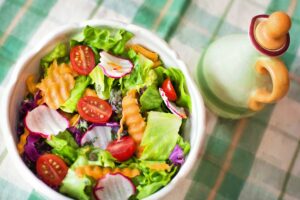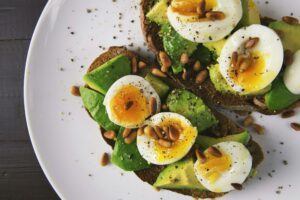Vertical Diet Food List
The Vertical Diet Food List is based on consuming whole, nutrient-dense foods to optimize nutrition for peak performance. This dietary approach emphasizes quality sources of protein, such as red meat and seafood, along with easily digestible carbohydrates like rice and potatoes.

By focusing on these key elements, individuals can promote sustained energy levels and enhance muscle recovery. The diet’s emphasis on micronutrients such as iron, zinc, and vitamins further supports overall health and well-being. Incorporating the Vertical Diet Food List principles into daily meals can help individuals achieve their fitness goals and maintain optimal performance levels.
The Vertical Diet Food List was created by Stan Efferding, a renowned bodybuilder and powerlifter. Efferding developed this dietary approach based on his own experiences in the fitness industry and the need for a sustainable way to fuel the body effectively. As a former IFBB professional bodybuilder and World’s Strongest Bodybuilder titleholder, Efferding understands the importance of proper nutrition in enhancing performance and achieving fitness goals. The Vertical Diet Food List has gained popularity not only among athletes but also among individuals looking to improve their overall health and well-being through a balanced and nutrient-rich eating plan.
The Core Components of the Vertical Diet Food List
The Vertical Diet Food List emphasizes the consumption of high-quality proteins to support muscle growth and recovery. Key sources of protein in this diet include red meat, such as beef and lamb, known for their rich iron content essential for oxygen transport in the body. Seafood, particularly fatty fish like salmon, is another excellent protein source that provides omega-3 fatty acids for heart and brain health.

By prioritizing these protein sources, individuals following the Vertical Diet can ensure they meet their daily protein requirements for optimal performance.
In the Vertical Diet Food List, carbohydrates are considered essential for sustained energy levels and replenishing glycogen stores after intense workouts. The focus is on easily digestible carbohydrate sources like rice and potatoes, which provide a quick source of energy without causing digestive distress. White rice, in particular, is favored for its low fiber content, making it a gentle option for fueling workouts. Potatoes, both white and sweet varieties, offer a mix of fast-acting glucose and slower-releasing starches, ideal for maintaining energy levels throughout the day. By incorporating these carbohydrate sources, individuals can fuel their workouts effectively while supporting overall performance and recovery.
In the Vertical Diet, dairy selections play a crucial role in providing essential nutrients for overall health and performance. Opt for full-fat dairy products like whole milk, yogurt, and cheese to ensure a rich source of protein, calcium, and vitamin D.
Meal Planning and Preparation Tips
When structuring daily meals following the Vertical Diet Food List, individuals are advised to include a balance of quality proteins, easily digestible carbohydrates, and essential micronutrients to support overall health and performance. Ideally, each meal should consist of a palm-sized portion of protein, such as red meat or seafood, to aid in muscle growth and recovery.

Pairing this with a serving of easily digestible carbohydrate sources like rice or potatoes can help maintain sustained energy levels throughout the day. Moreover, incorporating micronutrient-rich foods such as leafy greens, colorful vegetables, and fruits can provide essential vitamins and minerals crucial for optimal health.
Effective meal preparation is key to successfully following the Vertical Diet Food List and ensuring that nutrient-dense meals are readily available. To streamline the meal prep process, individuals can consider batch cooking protein sources like beef or chicken in advance and storing them for easy access during the week. Similarly, prepping batches of rice, sweet potatoes, or quinoa can help save time and ensure that carbohydrates are always on hand. Including a variety of vegetables in meal prep, either roasted or steamed, can add fiber, vitamins, and minerals to each meal. Planning ahead and having a well-stocked pantry with Vertical Diet-approved staples can make meal preparation more convenient and help individuals stay consistent with their nutrition goals.

